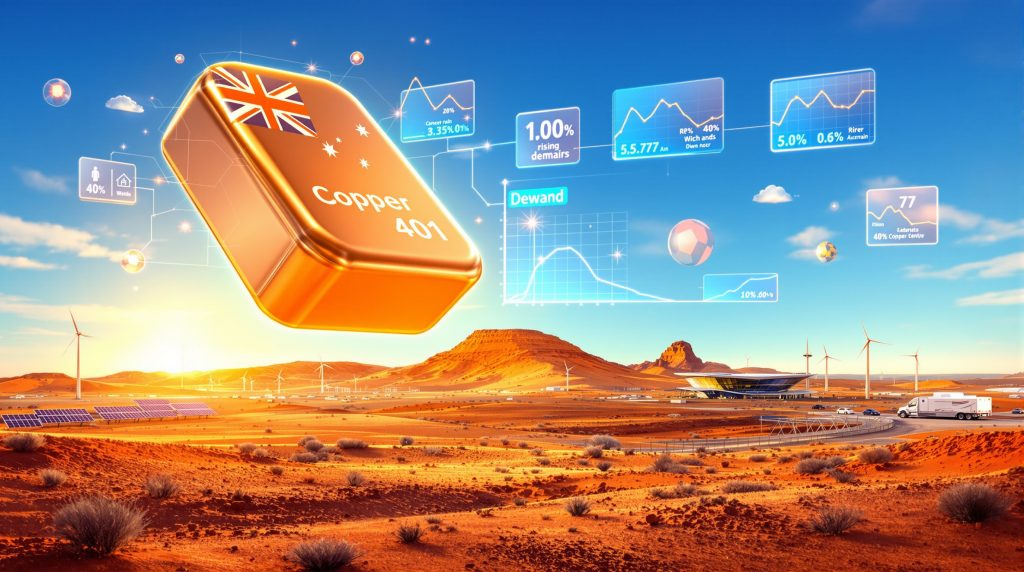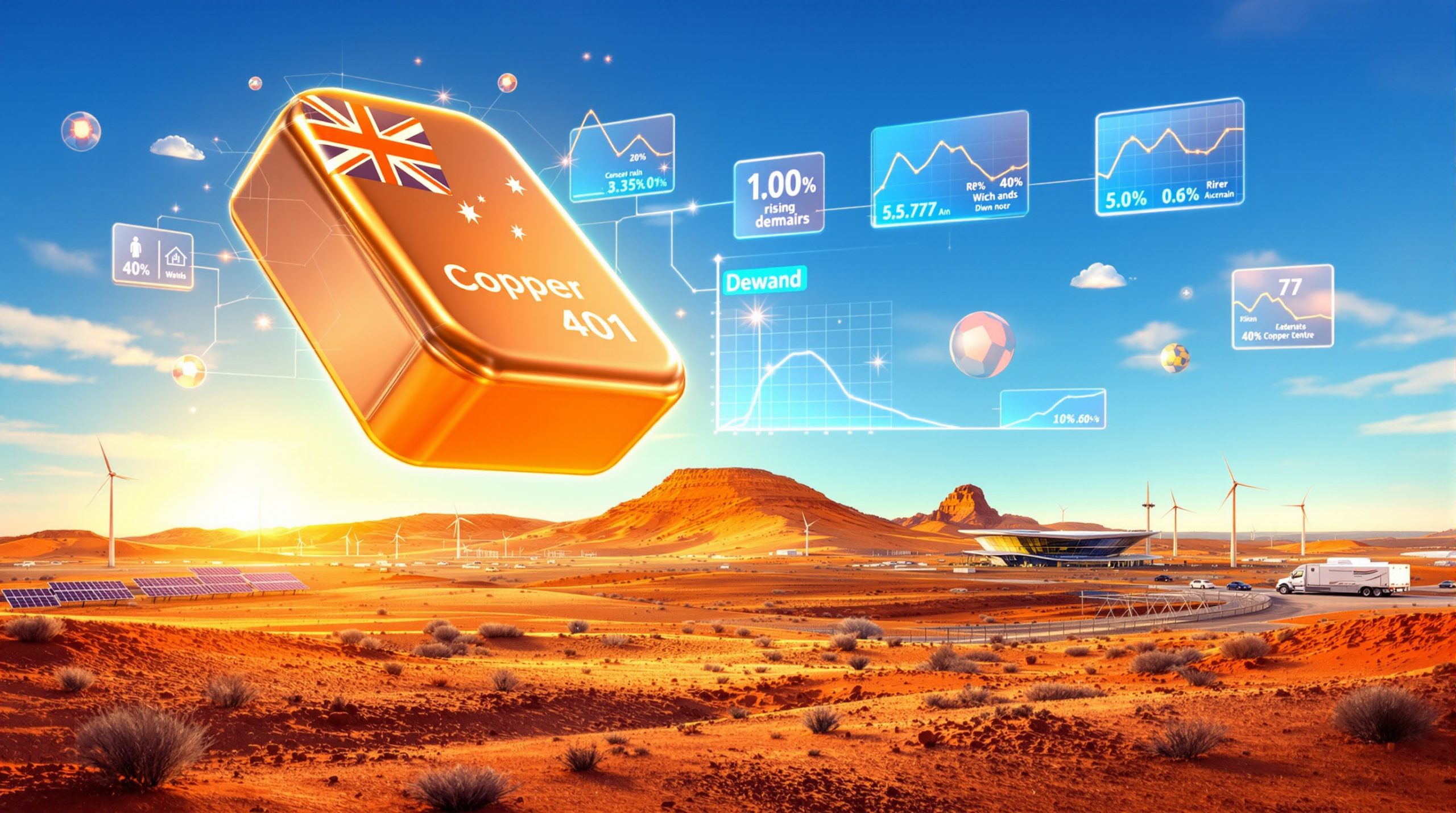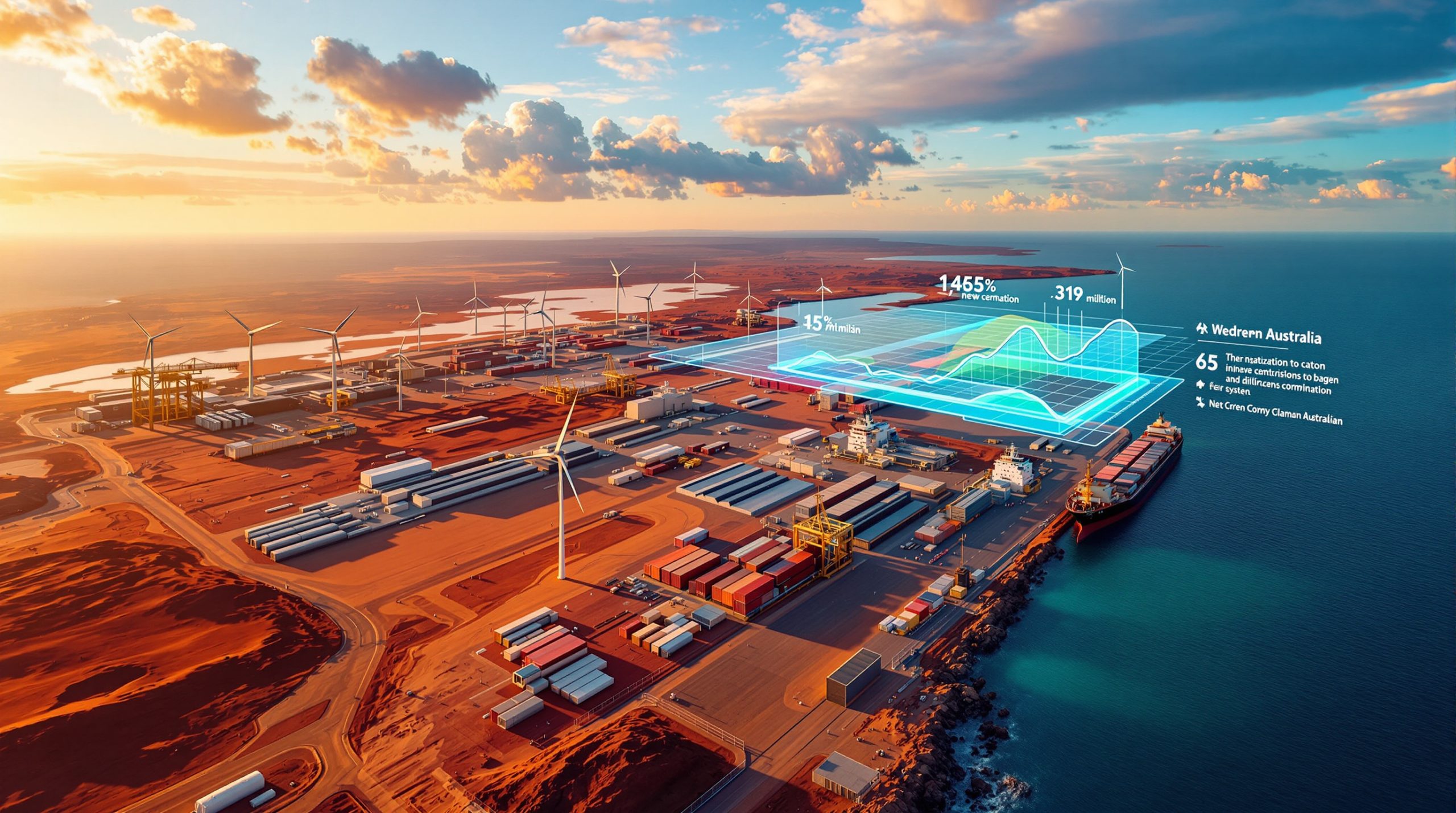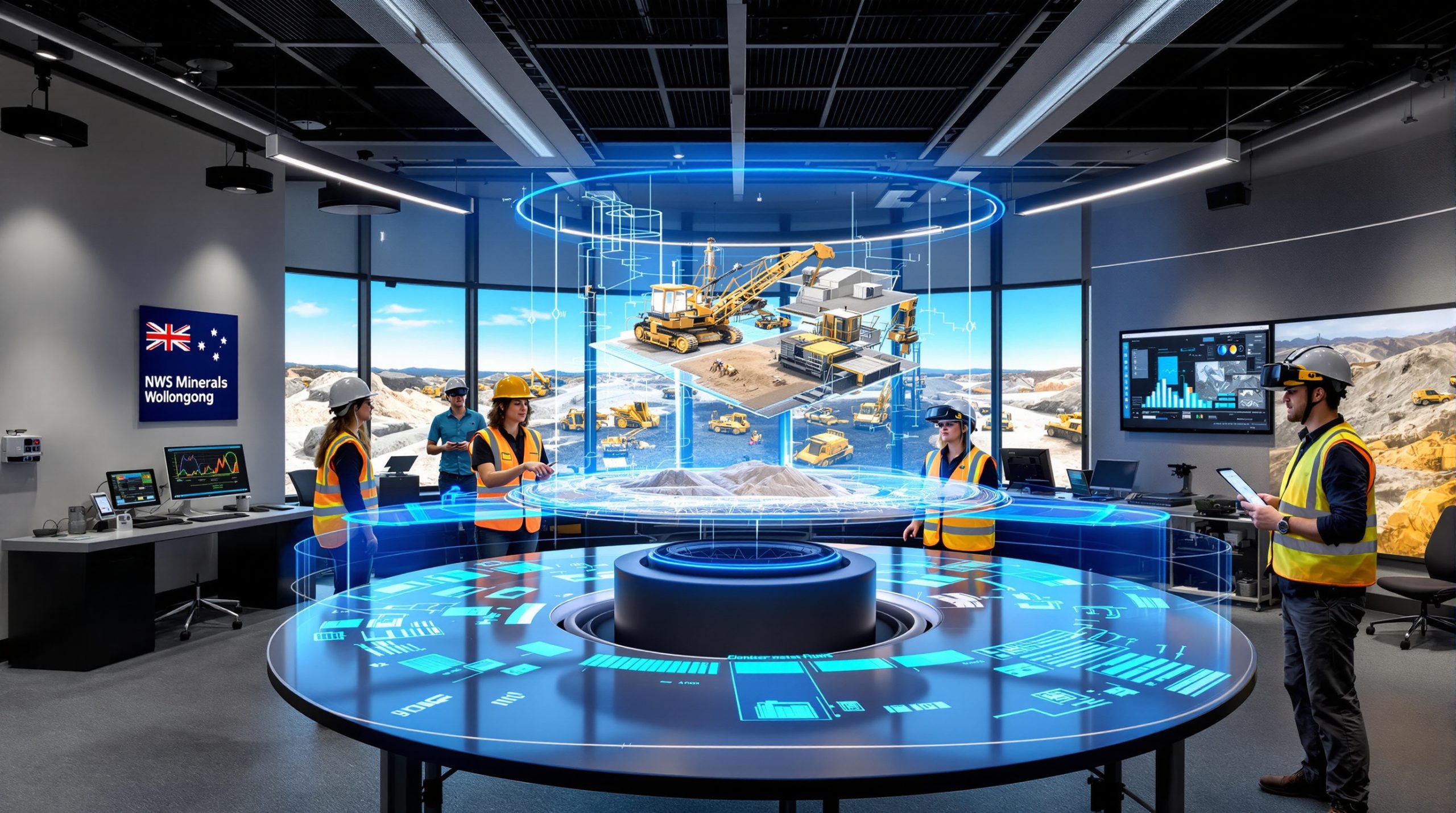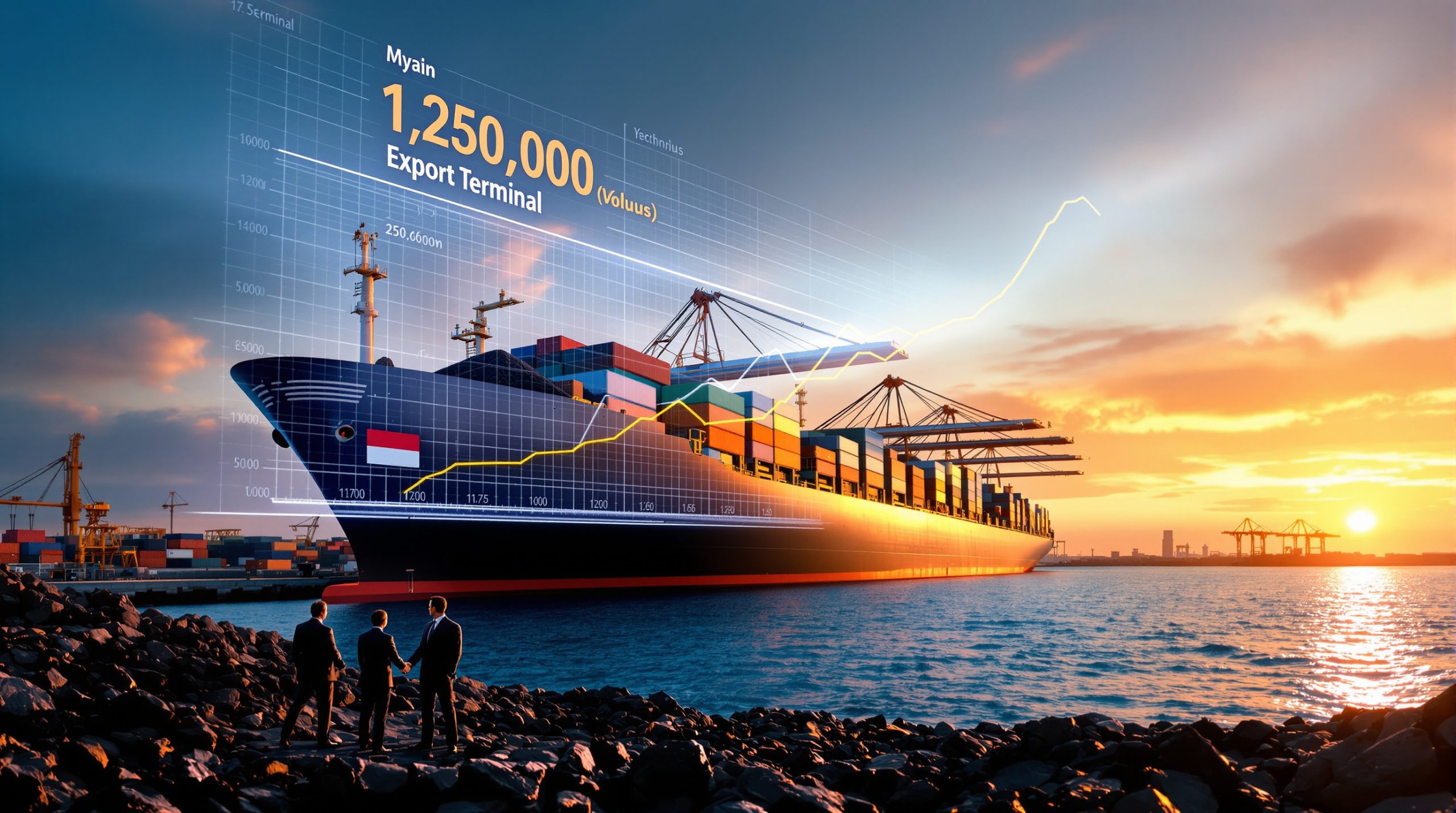Copper to the World Conference: Powering Australia's Sustainable Mining Future
Australia's premier copper industry event, the Copper to the World Conference, recently brought together nearly 600 delegates at the Adelaide Convention Centre to explore copper's vital role in the global energy transition. This landmark gathering showcased South Australia's positioning as a copper powerhouse and highlighted the technological innovations shaping the industry's future.
The 2025 conference, themed "The Copper Advantage: Powering the Future," served as a global meeting point for mining companies, technology providers, government representatives, and international stakeholders committed to advancing copper production amid growing worldwide demand.
What is the Copper to the World Conference?
The Copper to the World Conference stands as Australia's flagship copper industry event, connecting key players across the mining ecosystem. Hosted by Austmine in partnership with the Government of South Australia through the Department for Energy & Mining, the 2025 conference attracted nearly 600 attendees from domestic and international markets.
The event provides a crucial platform for knowledge exchange, featuring plenary sessions, technical presentations, and an exhibition showcasing the latest innovations in copper exploration, extraction, and processing technologies. This comprehensive approach allows delegates to gain insights into market trends, technological breakthroughs, and strategic partnerships shaping the copper industry.
More than 30 Mining Equipment, Technology and Services (METS) companies participated in the exhibition, demonstrating Australia's growing capability as a hub for mining innovation. The conference also featured an Innovation Hour where finalists pitched transformative technologies addressing critical challenges in deep copper mining and advanced processing methods.
As Austmine chair Dr. Dallas Wilkinson noted, "Meeting the world's growing demand for copper cannot be achieved in isolation; it requires global collaboration, robust discussions, open minds and bold innovation."
Why is South Australia Positioned as a Copper Hub?
South Australia's Copper Resource Advantage
South Australia possesses approximately two-thirds of Australia's high-quality copper resources, establishing it as the nation's copper heartland. This geological advantage provides the foundation for South Australia's emergence as a global copper production center.
The state's copper credentials were firmly established 50 years ago with the discovery of Olympic Dam, one of the world's largest copper deposits. This historical milestone marked the beginning of South Australia's journey toward becoming a copper powerhouse with significant unexplored potential remaining across the state's mineral-rich terrains.
Government and Industry Alignment
The South Australian government has created a favorable regulatory environment specifically designed to support copper mining development. This approach includes streamlined permitting processes, research funding initiatives, and infrastructure investment to facilitate industry growth.
South Australia's Minister for Energy and Mining, Tom Koutsantonis, emphasized this strategic positioning: "South Australia sits at the intersection of abundant copper and clean energy, and our vision is to establish this state as a world-class copper producer and a global hub for innovation and technology."
This government-industry partnership has fostered a collaborative ecosystem where exploration companies, established miners, technology providers, and research institutions work together to advance the sector.
Strategic Location and Infrastructure
The state's well-developed mining infrastructure, including ports, rail networks, and energy systems, provides logistical advantages for copper producers. South Australia's proximity to Asian markets further enhances its appeal as an export hub.
BHP Copper South Australia asset president Anna Wiley reinforced this view, noting: "The state is widely regarded as a good jurisdiction for mining, and here in South Australia it is well positioned to meet growing global demand."
Department for Energy & Mining chief executive Paul Martyn highlighted the strategic integration of energy and mining policies: "Energy and mining are inextricably linked, and that connection is driving demand for copper worldwide. Here in South Australia, we bring those agendas together – renewable energy, decarbonisation, exploration and mining – to unlock growth and opportunity."
How is Copper Driving the Energy Transition?
Essential Role in Renewable Technologies
Copper serves as a fundamental component in renewable energy systems due to its exceptional electrical conductivity properties. Solar panels require substantial copper for wiring and connection systems, while wind turbines use approximately 4.7 tons of copper per megawatt of capacity, with usage concentrated in generators, transformers, and cable systems.
Energy storage solutions, including grid-scale batteries and pumped hydro systems, also rely heavily on copper components for their electrical infrastructure. The metal's unique properties enable efficient energy transfer with minimal losses, making it irreplaceable in renewable energy applications.
Electric Vehicle Revolution Dependencies
The transition to electric vehicles is dramatically increasing copper demand across the automotive sector. Each electric vehicle requires up to four times more copper than conventional internal combustion engine vehicles – approximately 83 kg compared to 23 kg in traditional vehicles.
This increased copper requirement extends throughout the EV ecosystem:
- Battery systems (copper foil and connectors)
- Electric motors (copper windings)
- Power inverters and converters
- Charging infrastructure (cables and connectors)
- Wiring harnesses
As EV adoption accelerates globally, this sector alone is projected to drive significant copper demand growth over the coming decades.
Grid Modernization Requirements
Upgrading and expanding electrical grids to accommodate intermittent renewable energy sources necessitates substantial copper investments. Smart grid technologies, high-voltage transmission systems, and distribution networks all depend on copper's conductive properties.
Modern grid infrastructure requires:
- High-capacity transmission lines
- Transformer stations
- Energy storage integration systems
- Advanced metering infrastructure
- Decentralized generation connection points
Minister Koutsantonis emphasized this critical relationship, stating: "There is no path to decarbonisation without copper." This underscores the metal's fundamental role in enabling the global energy transition.
What Were the Key Themes at the 2025 Conference?
The Copper Advantage: Powering the Future
The conference theme highlighted copper's indispensable role in enabling global decarbonization efforts and technological advancement. Presentations demonstrated how copper's unique properties – particularly its unmatched electrical conductivity, corrosion resistance, and recyclability – make it essential for renewable energy systems, electric vehicles, and modern electronics.
Technical sessions explored copper's performance advantages over potential substitutes, reinforcing its strategic importance in addressing climate change and energy security challenges.
Global Collaboration Opportunities
Sessions featuring ambassadors from Chile, Peru, and Argentina explored how Australia and Latin America can forge partnerships to secure future copper supply chains. These discussions emphasized international cooperation in addressing shared challenges such as declining ore grades, water management, and sustainable mining practices.
The participation of representatives from these major copper-producing nations highlighted the global nature of copper markets and the importance of knowledge exchange across borders. Collaborative approaches to technology development, workforce training, and environmental standards emerged as priorities for securing the industry's future.
Digital Transformation in Copper Mining
Breakout sessions showcased advances in automation, artificial intelligence, and real-time data platforms transforming copper extraction and processing. Companies including Salesforce and Dassault Systèmes presented digital solutions enhancing operational efficiency across the mining value chain.
Technologies featured included:
- AI-powered predictive maintenance systems
- Autonomous drilling and haulage equipment
- Digital twins for mine planning and optimization
- Advanced sensor networks for real-time monitoring
- Machine learning applications for ore sorting and grade control
These innovations promise to improve productivity, reduce costs, enhance safety, and minimize environmental impacts in copper operations.
Next-Generation Processing Technologies
Technical presentations highlighted innovations in copper processing methods, with organizations including CSIRO, EnviroCopper, Sedgman, and Multotec demonstrating advances in ore characterization and extraction techniques.
New approaches focused on:
- In-situ recovery methods for minimally invasive extraction
- Advanced hydrometallurgical processes for low-grade ores
- Energy-efficient comminution technologies
- Water conservation and recycling systems
- Novel reagents for improved recovery rates
These technologies aim to unlock previously uneconomic resources while reducing the environmental footprint of copper production.
Who Were the Key Speakers and Partners?
Industry Leadership Perspectives
BHP, as principal partner, played a central role with Anna Wiley, Copper South Australia Asset President, outlining the company's strategy to meet future demand and support sustainable copper production. Her presentation highlighted BHP's long-term commitment to South Australia as a copper hub and the company's investments in technology and community partnerships.
Other industry leaders from companies including Sandvik, Worley, Dyno Nobel, Metso, and Minsur shared insights on market trends, operational excellence, and sustainability initiatives. These executive perspectives provided valuable context on how major players are positioning for the copper market's future evolution.
Government Representation
South Australian Minister for Energy and Mining Tom Koutsantonis and Department for Energy & Mining Chief Executive Paul Martyn delivered keynote addresses outlining government perspectives on copper's importance to the state's economic future.
Their presentations detailed policy initiatives supporting the sector, including:
- Exploration incentive programs
- Infrastructure development plans
- Skills and workforce development strategies
- Research and innovation funding
- Regulatory frameworks promoting sustainable development
This government participation demonstrated the strong public-private alignment driving South Australia's copper strategy.
International Stakeholders
Representatives from major copper-producing nations including Chile, Peru, and Argentina participated in panel discussions about global copper supply forecast and market dynamics. These international delegates provided valuable perspectives on production challenges, market trends, and policy developments in key copper regions.
The international participation highlighted opportunities for Australian producers to learn from established copper nations while showcasing Australia's emerging capabilities to the global market.
Technology and Service Providers
Leading companies in the mining technology and services sector presented their latest innovations supporting the copper industry's advancement. The exhibition floor featured more than 30 METS companies displaying solutions ranging from exploration technologies to processing equipment and digital systems.
These technology partnerships are crucial for advancing productivity, sustainability, and safety across the copper value chain.
What Innovations Were Showcased at the Conference?
Robotics and Automation Systems
The exhibition floor featured cutting-edge robotics solutions designed specifically for copper mining operations. These systems demonstrated how autonomous technologies can improve safety and productivity, particularly in challenging underground environments where human access may be limited or hazardous.
Innovations included:
- Autonomous drilling platforms with real-time ore analysis capabilities
- Remote-operated loaders and haulers for underground operations
- Robotic systems for maintenance and inspection in confined spaces
- Automated sampling and assay systems for quality control
- Sensor-equipped drones for mapping and monitoring
These technologies are reducing human exposure to hazardous conditions while improving operational efficiency and data collection.
AI-Driven Exploration Models
Several companies presented artificial intelligence platforms that enhance copper exploration success rates by analyzing geological data more effectively than traditional methods. These AI systems integrate multiple data sources – including geophysical surveys, drill results, satellite imagery, and historical information – to identify patterns indicating potential copper deposits.
By applying machine learning algorithms to this complex data, exploration companies can prioritize targets more effectively, potentially reducing discovery costs and environmental impacts while increasing success rates.
Advanced Hydrometallurgical Techniques
Next-generation processing technologies were highlighted, including innovative hydrometallurgical approaches that can extract copper more efficiently from lower-grade ores. These chemical-based extraction methods offer alternatives to traditional energy-intensive concentration and smelting routes, potentially unlocking resources previously considered uneconomic.
Presenters demonstrated how these approaches can:
- Reduce energy consumption by up to 50% compared to conventional methods
- Decrease water usage through closed-loop systems
- Process complex ores containing deleterious elements
- Operate at smaller scales with lower capital requirements
- Produce lower environmental emissions and waste volumes
These technologies may be particularly valuable for developing smaller deposits or extending the life of existing operations.
Real-Time Data Analytics Platforms
Digital solutions providing comprehensive operational insights were demonstrated, showing how data-driven decision-making can optimize copper production and reduce resource consumption. These platforms integrate information from equipment sensors, process controls, quality monitoring, and maintenance systems to create a holistic view of operations.
By analyzing this data in real-time, operators can:
- Identify production bottlenecks and optimization opportunities
- Predict equipment failures before they occur
- Optimize energy and water consumption
- Improve recovery rates through process adjustments
- Enhance environmental performance monitoring
These digital tools represent a significant advancement in operational management capabilities for copper producers.
How is Australia Positioning in the Global Copper Market?
Innovation Hub Development
Australia is establishing itself as a global center for copper mining innovation, with the conference showcasing the country's technological leadership in exploration, extraction, and processing methods. This innovation ecosystem includes research institutions, technology companies, and mining operators collaborating to develop solutions for industry challenges.
The Innovation Hour at the conference highlighted this capability, with Australian companies pitching solutions ranging from AI-driven exploration tools to copper mining technology advancements. This innovation focus represents a key competitive advantage as Australia seeks to expand its role in global copper markets.
Sustainable Production Focus
Australian copper producers are emphasizing sustainability credentials, developing methods to reduce water usage, minimize carbon emissions, and improve community engagement. This approach aligns with growing market expectations for responsibly produced materials, particularly for applications in renewable energy and electric vehicles.
Sustainability initiatives highlighted at the conference included:
- Renewable energy integration at mine sites
- Water recycling and conservation technologies
- Community benefit-sharing programs
- Biodiversity protection and rehabilitation practices
- Supply chain transparency and traceability systems
These efforts position Australian copper favorably in markets increasingly concerned with environmental and social performance.
Critical Minerals Strategy Integration
Copper's inclusion in Australia's critical minerals strategy highlights its strategic importance beyond traditional applications. The government has recognized copper as essential for the energy transition and technological development, providing policy support to enhance the sector's growth.
This strategic designation has increased funding for copper-related research, exploration incentives, and skills development programs. The integration of copper into broader critical minerals policies also strengthens international partnerships focused on supply chain security.
Export Market Diversification
Australian producers are diversifying export markets beyond traditional destinations, strengthening supply chain resilience while meeting growing demand from renewable energy and electric vehicle manufacturers globally. This market expansion strategy includes developing deeper relationships with clean technology manufacturers and engaging with emerging markets experiencing rapid electrification.
By positioning copper as a "future-facing" mineral essential for decarbonization, Australian producers are aligning with global sustainability trends while expanding their customer base and reducing market concentration risks.
What Challenges Face the Copper Industry?
Meeting Escalating Demand
The conference addressed the significant challenge of scaling production to meet projected copper demand growth. Current forecasts suggest global copper demand could double by 2035, driven primarily by electrification and renewable energy deployment.
This demand surge creates several challenges:
- The need to accelerate exploration and project development
- Increasing capital requirements for new projects
- Longer lead times for mine development (typically 7-10 years)
- Technical challenges of developing deeper and more complex deposits
- Competition for resources and equipment in a growing market
Addressing these challenges requires coordinated action across industry, government, and financial sectors to ensure timely supply development.
Environmental Performance Expectations
Sessions explored how copper producers must balance increased production with stricter environmental standards. Key focus areas include:
- Water management in water-stressed regions
- Energy consumption and greenhouse gas emissions
- Mine waste management and tailings safety
- Land use impacts and biodiversity protection
- Community health and safety considerations
The industry faces growing pressure to demonstrate environmental stewardship while expanding production capacity, creating both challenges and opportunities for innovation.
Skills and Workforce Development
Discussions highlighted the industry's need to attract and develop skilled workers capable of operating increasingly technical mining operations. As digitalization transforms traditional mining roles, companies face competition for talent with expertise in automation, data analytics, artificial intelligence, and advanced process control.
The conference explored strategies for:
- Attracting diverse talent to the mining sector
- Reskilling existing workforce for digital operations
- Developing specialized training programs
- Creating partnerships with educational institutions
- Improving workplace culture and employee retention
Addressing these workforce challenges is essential for implementing the advanced technologies needed to improve productivity and sustainability.
Capital Investment Requirements
Financing the next generation of copper projects emerged as a key challenge, with presentations examining the substantial capital needs for developing new mines and expanding existing operations. With major copper projects often requiring billions of dollars in investment, securing funding has become increasingly complex.
Factors influencing capital availability include:
- ESG investment criteria and reporting requirements
- Longer payback periods for some projects
- Technical and geological risks in new developments
- Political and regulatory uncertainties in some jurisdictions
- Competition with other mining and resource sectors
Innovative financing models, strategic partnerships, and government support mechanisms were discussed as potential approaches to address these capital challenges.
What's Next for South Australia's Copper Industry?
Exploration Pipeline Expansion
The state is actively encouraging exploration investment to identify new copper resources, with government initiatives supporting companies undertaking high-risk exploration activities. These programs include co-funded drilling initiatives, geophysical surveys, and data provision to reduce exploration costs and risks.
The exploration focus extends beyond traditional areas to investigate deeper targets and regions with cover sequences that may conceal significant deposits. Advanced geophysical methods, including magnetotelluric surveys and 3D seismic techniques, are being deployed to identify these hidden resources.
Processing Technology Advancement
Research partnerships between industry and institutions are developing new processing methods specifically tailored to South Australian ore bodies. These collaborative projects aim to overcome technical challenges associated with complex mineralogy, lower grades, and deeper deposits.
Key technology development areas include:
- In-situ recovery methods for minimal surface disturbance
- Advanced leaching techniques for complex ores
- Energy-efficient comminution and grinding solutions
- Water-efficient processing systems
- Byproduct recovery optimization
These technologies could potentially unlock previously uneconomic resources while improving environmental performance.
Infrastructure Development Plans
Strategic infrastructure investments are being planned to support copper industry growth, including energy, water, and transportation systems designed to accommodate increased production volumes. These developments recognize that infrastructure constraints can limit mining expansion, particularly in remote regions.
Planned investments include:
- Renewable energy generation and transmission
- Water supply and management systems
- Road and rail connections to mining regions
- Port facilities for concentrate and refined product export
- Shared infrastructure corridors for multiple projects
These coordinated infrastructure developments aim to reduce barriers to entry for new projects while improving the efficiency of existing operations.
Community and Indigenous Partnerships
The conference highlighted the importance of meaningful engagement with communities and Indigenous groups, with several presentations showcasing successful partnership models that deliver shared benefits. These approaches recognize that social license is essential for sustainable development and that local communities should share in the economic opportunities created by mining.
Innovative partnership approaches include:
- Equity participation and revenue-sharing arrangements
- Skills development and employment pathways
- Local business development programs
- Cultural heritage protection protocols
- Environmental co-management frameworks
These collaborative models represent a significant evolution in how mining companies engage with communities and Indigenous peoples.
FAQ: Copper to the World Conference
When and where was the Copper to the World Conference 2025 held?
The conference was held at the Adelaide Convention Centre in August 2025, bringing together nearly 600 delegates from across Australia and international markets.
Who organized the Copper to the World Conference?
The conference was hosted by Austmine and presented in partnership with the Government of South Australia through the Department for Energy & Mining.
What was the theme of the 2025 conference?
The conference explored the theme "The Copper Advantage: Powering the Future," highlighting copper's essential role in the energy transition and the technologies shaping the industry's next chapter.
Why is copper considered critical for the energy transition?
Copper's exceptional electrical conductivity makes it essential for renewable energy systems, electric vehicles, and grid infrastructure—all fundamental components of global decarbonization efforts.
What role does South Australia play in global copper production?
South Australia holds two-thirds of Australia's high-quality copper resources and is positioning itself as a world-class copper producer and global hub for innovation and technology in copper mining.
Further Exploration
For those interested in learning more about Australia's copper industry and the Copper to the World conference, additional resources are available through the Copper to the World website and South Australian Department for Energy & Mining platforms. These resources provide ongoing updates about industry developments, copper price prediction insights and copper investment strategies for those looking to capitalize on future opportunities.
The conference's focus on collaboration, innovation, and sustainability reflects the broader transformation underway in the mining sector as it adapts to meet the demands of a rapidly changing global economy and the imperative of climate action. Furthermore, US copper investment insight shared during the conference highlighted the global interest in developing new copper resources to meet growing demand.
Ready to Spot the Next Major Mineral Discovery?
Discovery Alert's proprietary Discovery IQ model provides instant notifications when significant ASX mineral discoveries are announced, helping you gain a crucial market advantage before the news spreads. Explore how historic discoveries have generated substantial returns by visiting the dedicated discoveries page and position yourself ahead of the market.
